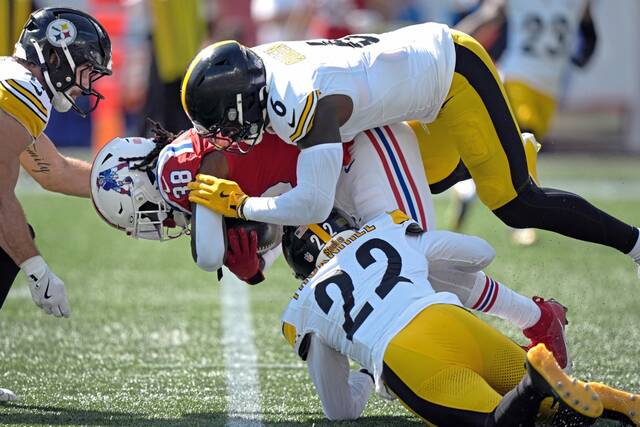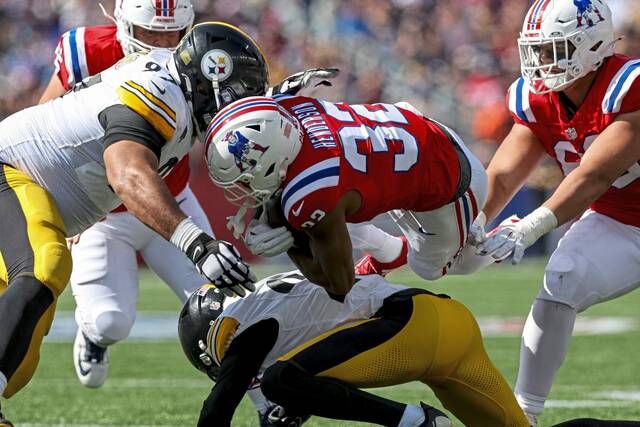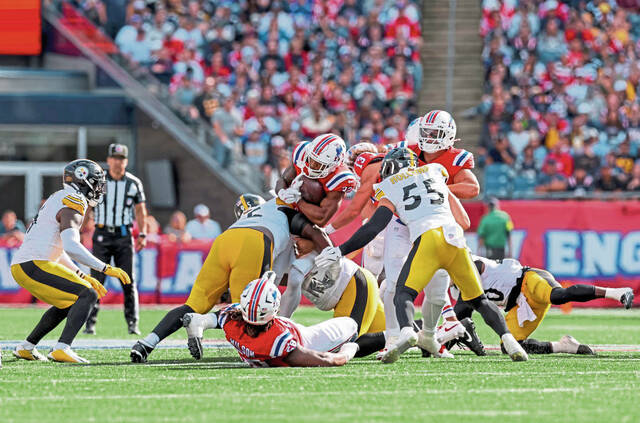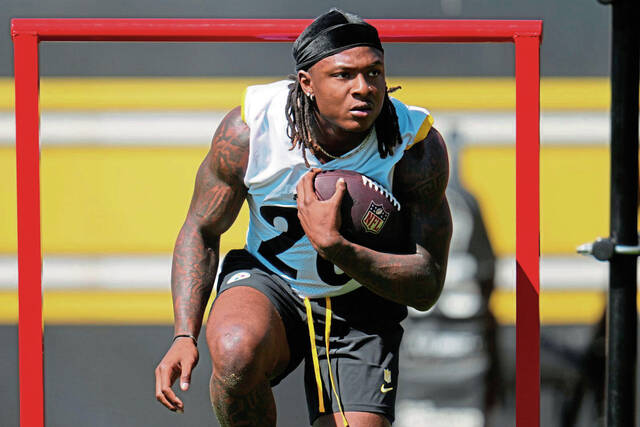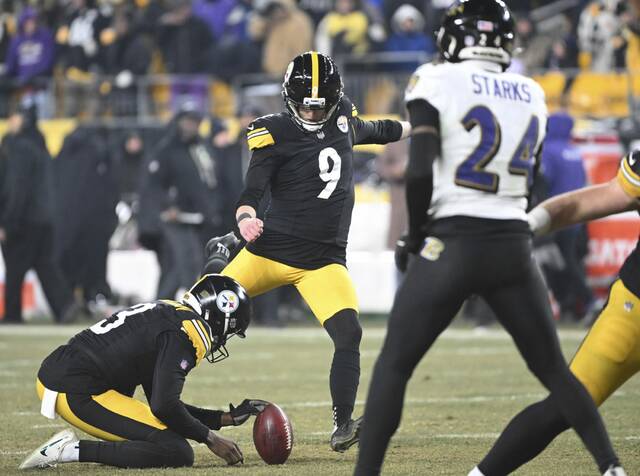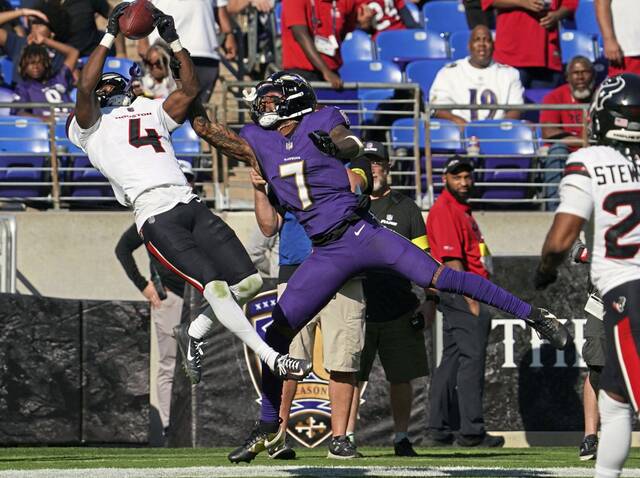Cameron Heyward didn’t think the New England Patriots’ decision to go for a first down on fourth-and-1 from their 15 was related to coach Mike Vrabel having faith in his offense or based on some analytical decision that suggested it was a risk worth taking.
He also didn’t view it as a slight against the Steelers.
“I think it’s an act of desperation,” Heyward said Thursday. “If we get a stop right there, it’s a closed-book situation. With desperate teams, you have to be willing to empty the clip, and (we have to) make sure we get those. The flip side is, if you get a stop there, you’re guaranteeing points.”
The trouble is, the Steelers didn’t get that stop in the second quarter with the Patriots trailing 14-7. The Patriots gained 10 yards on a toss to running back Rhamondre Stevenson, and they converted three times on third down before turning the ball over on an end zone interception with 7 seconds left in the half.
The Patriots converted four times on fourth down before the Steelers made a stop with 63 seconds remaining to seal a 21-14 victory.
To the Steelers, the frustration wasn’t that New England had its way on fourth down for much of the game, it was the way the defense played on third down, particularly in long-distance situations.
On the play before the Stevenson run, the Steelers gave up 11 yards on a third-and-12 pass to the running back. Later in that drive, the Patriots converted a third-and-10 and third-and-13.
Defensive coordinator Teryl Austin said Thursday that not all of the Steelers’ issues on third-and-long situations are attributed to new pieces in the secondary. Strong safety DeShon Elliott and cornerback Joey Porter Jr. missed their second consecutive game because of injuries. As a result, for the second game in a row, the Steelers had five members of the secondary who weren’t on the 53-man roster last year. And a sixth member made his Steelers debut on defense when Jabrill Peppers started at one of the safety spots.
“Some (of the problems) aren’t communication. It’s how we are doing things,” Austin said. “We just have to be tighter in terms of where we are in terms of our drops, in terms of what our landmarks are. We do some spot-drop stuff. We have particular landmarks we like to get, and sometimes we don’t get exactly on them. Sometimes we don’t break. There’s a lot of different things that go into it. So it’s really not just one person or one thing.”
The Steelers offense has the third-worst time of possession in the NFL, which has accounted for the defense being on the field longer. Then again, if the defense was more successful on third down, the offense would have more chances to possess the ball.
The defense has allowed opponents to convert 46% on third down through three weeks, which ranks No. 28 in the league. On fourth down, the Steelers have yielded six conversions in nine chances. They are tied with the Los Angeles Rams for most fourth-down conversions surrendered.
“We have to be closer in coverage,” Heyward said. “On the D-line, you have to get your hands up in those moments. It’s been the third-and-longs that have really gotten us. Our coverage has to be tighter, and our rush has to be elite.”
It’s also no longer a given that teams will automatically punt in fourth-and-short situations regardless of field position. And Austin believes the uptick in teams going for it on fourth down predates the emergence of the Tush Push as a near-automatic means of getting a first down.
“A lot of analytics tell you that early in the game if you get to fourth-and-1, go for it,” Austin said. “As the game goes on, there might be different reasons why you wouldn’t. We kind of expect that. Our biggest thing is let’s not get into fourth-and-1.”
Easier said than done as the Steelers have learned in the early portion of the season.
“We need to keep teams in manageable and longer third downs,” cornerback Darius Slay said. “Last week, we got them to third down and won third down, but they got to fourth-and-1s. It’s what everybody in the league is doing now: going for it on fourth-and-1.”
Washington, for instance, converted 20 of 23 attempts on fourth down last season while emerging as a surprise team in the NFL. The Commanders also remained aggressive on fourth down in the postseason and converted six of nine tries in their run to the conference championship game. To no surprise, three of the NFL’s other elite teams last year — Buffalo, Kansas City and Philadelphia — also converted more than 70% of their fourth-down tries.
“I’ve been on a part of teams that, if they could go for it on their own 2, they would,” said Slay, who won a Super Bowl last year with the Eagles. “That’s just part of the game.”


